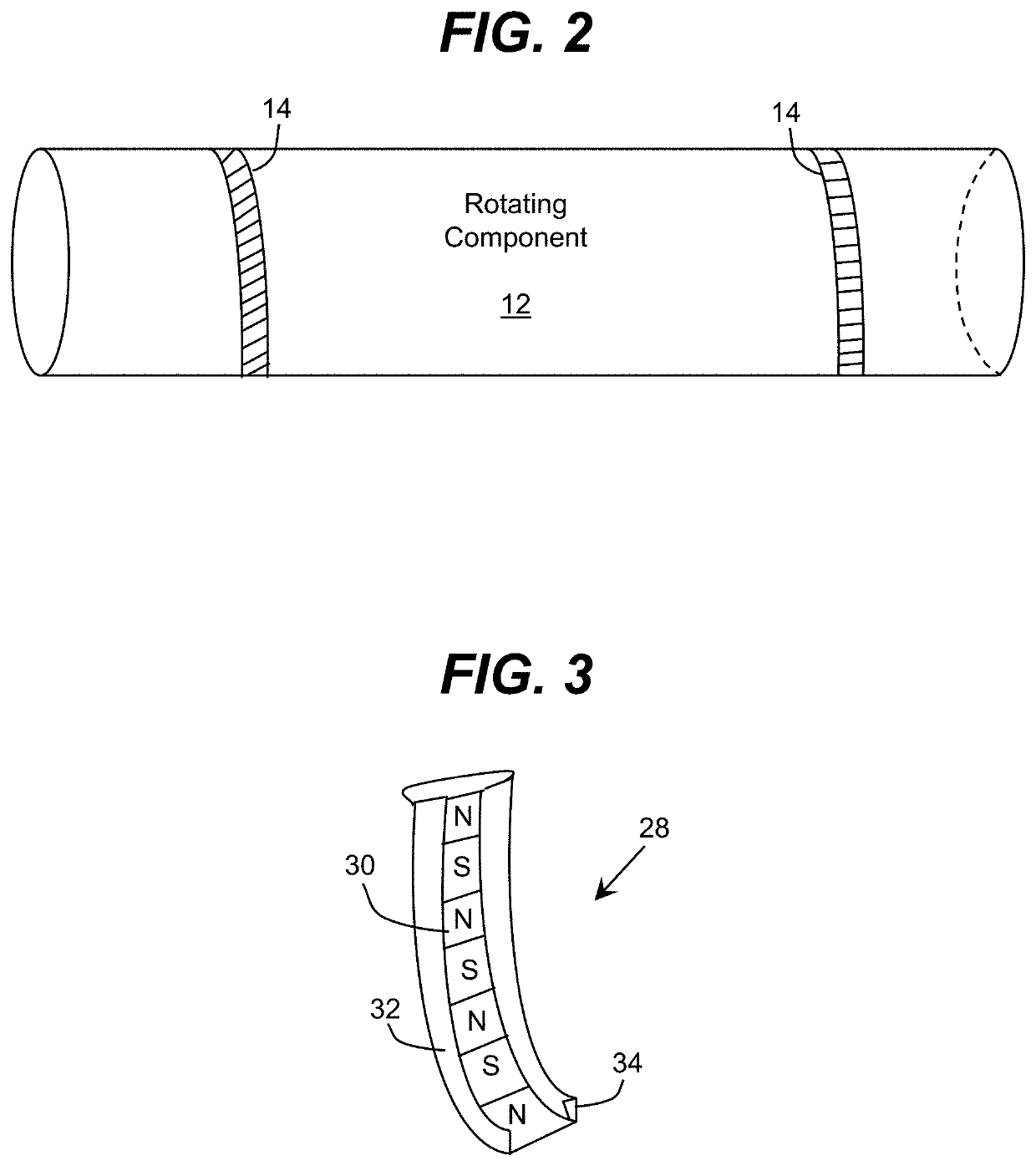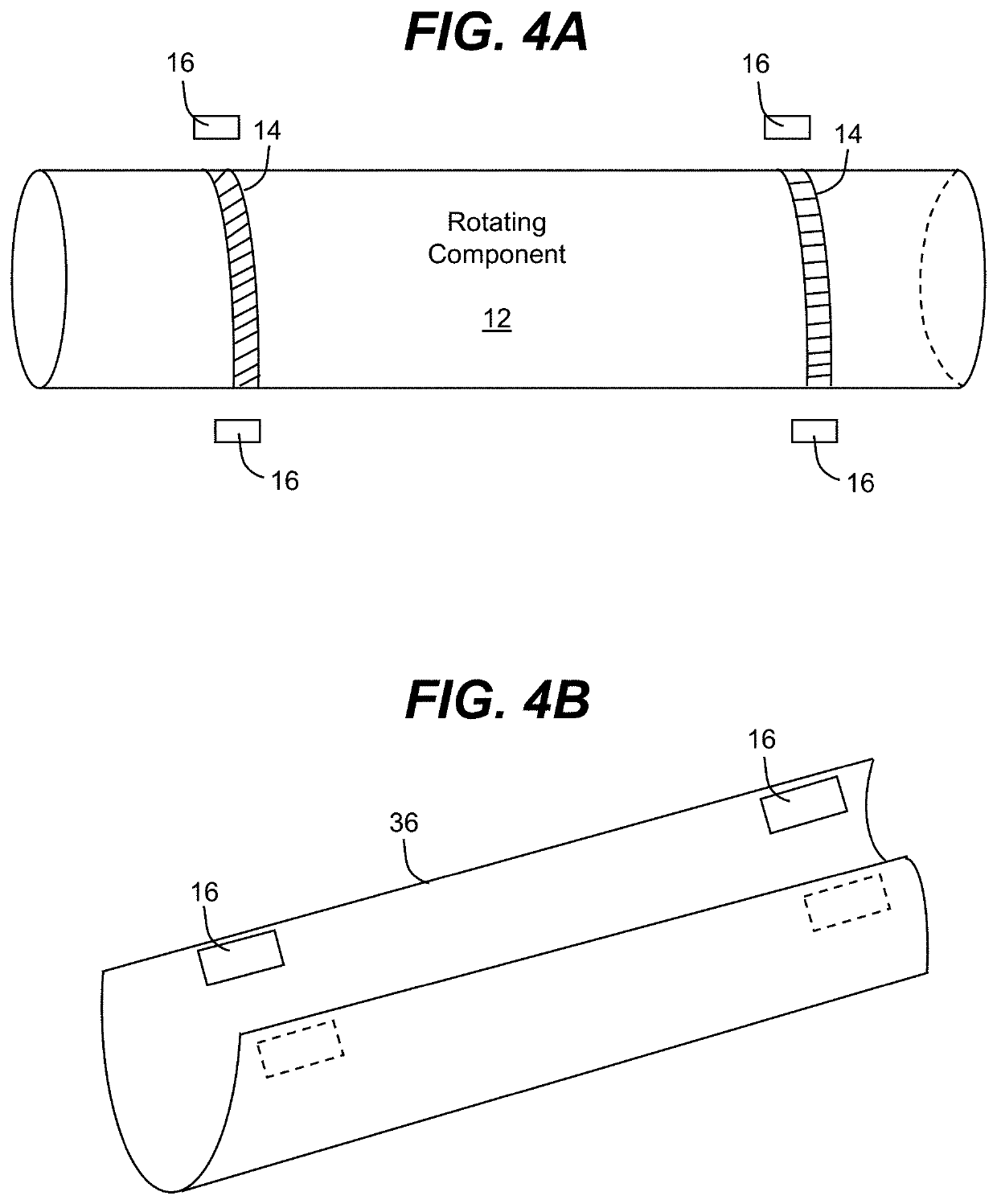Mechanical component torque measurement
a technology of torque measurement and mechanical components, applied in the field of mechanical components, can solve the problems of inability to accurately measure the torque of mechanical components, and inability to fully use strain gauges, etc., and achieve the effect of small lift-off level and accurate data acquisition
- Summary
- Abstract
- Description
- Claims
- Application Information
AI Technical Summary
Benefits of technology
Problems solved by technology
Method used
Image
Examples
Embodiment Construction
[0033]As indicated above, aspects of the invention are directed to approaches that can measure and monitor torque in a mechanical component, such as a rotating component. These approaches do not involve physical connections and direct modifications to the rotating component for the data acquisition components. Further, these aspects are not limited to very small lift-off levels, but instead can allow for significant lift-off (i.e., greater than one quarter inch). In addition to measuring torque in a rotating component, aspects of the invention are also directed to determining other related parameters such as for example, strain (e.g., twist), rotational speed, rotational displacement and spatial displacement. To this extent, other aspects of the invention are directed to monitoring these measurements and determining how such measurements affect the performance of the rotating component, as well as the impact that the measurements have on the component from structural and / or safety p...
PUM
| Property | Measurement | Unit |
|---|---|---|
| physical angles | aaaaa | aaaaa |
| torque | aaaaa | aaaaa |
| strength | aaaaa | aaaaa |
Abstract
Description
Claims
Application Information
 Login to View More
Login to View More - R&D
- Intellectual Property
- Life Sciences
- Materials
- Tech Scout
- Unparalleled Data Quality
- Higher Quality Content
- 60% Fewer Hallucinations
Browse by: Latest US Patents, China's latest patents, Technical Efficacy Thesaurus, Application Domain, Technology Topic, Popular Technical Reports.
© 2025 PatSnap. All rights reserved.Legal|Privacy policy|Modern Slavery Act Transparency Statement|Sitemap|About US| Contact US: help@patsnap.com



